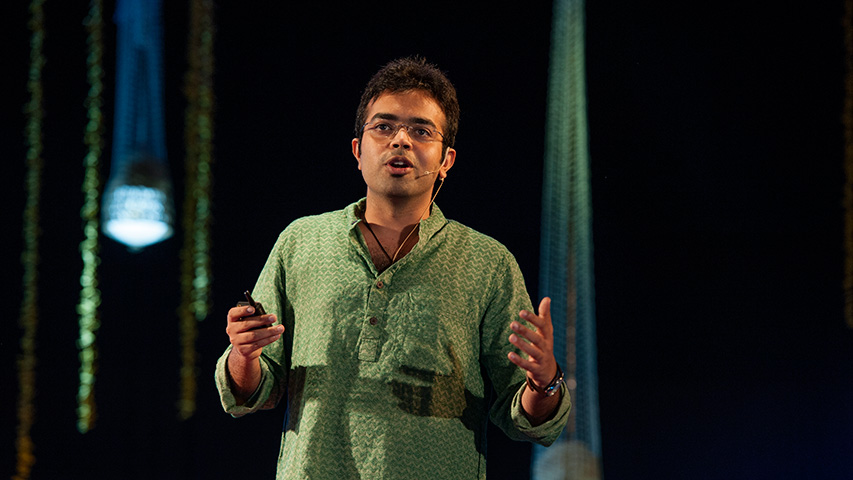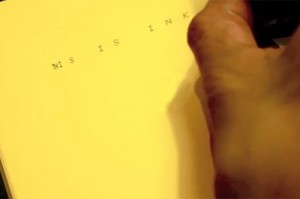Printing with Pollution?
-
-
slice.mit.edu
- 1
Filed Under
Recommended

2018 update: Anirudh Sharma SM '14 established Graviky Labs, which uses the soot from pollution to provide artists with paint.
Could soot be used as ink for printers? Anirudh Sharma SM '14 came up with the idea a couple of years ago and he found a way to make it happen—designing a product that could lead to ways to clean the air and offer an alternative to standard printer ink, which is especially significant given that hundreds of millions of ink cartridges are used around the world every year. “Air pollution is a major problem that people are facing,” says Sharma, a native of India. “Just Google Delhi/Beijing air pollution and you'll see how many people are dying due to air pollution. The idea was to convert the problem into an opportunity.”

The Kaalink printer, now being piloted in New Delhi and Bangalore, is made by combining rubbing alcohol, oil substrate, and soot to make industrial grade printing ink. “We capture the pollutants via capacitive plating method and use a nano-fabricated grid to separate the carbon black,” says Sharma. “Capturing soot to make something useful will not only be a new business model, but also a way to prevent our cities from choking.”
His pollution-turned-printer vision is just one of his many ideas that recently earned him a spot on the Forbes 30 Under 30 list. Sharma, who calls himself a chronic inventor, started his first company in Bangalore in 2010 after inventing Lechal, a shoe that helps visually impaired people to better navigate their surroundings. The shoes, which have built-in sensors and feedback that offer hands-free navigation, are now being marketed for much wider use and proceeds from each pair goes towards subsidizing a pair for someone who is visually-challenged and not able to purchase one at full price.
Soon after getting the shoe business in motion, Sharma moved on to his next invention and soon found himself at the ultimate playground for tinkerers, the MIT Media Lab, where he earned his master’s degree in the fluid interfaces group and co-led the Media Lab India Initiative.
While at MIT, Sharma worked on futuristic interfaces using transparent displays and augmented reality, like a ruler with real-time feedback simulation. If you draw a shape with the ruler and then view the shape through a transparent display built into the plastic tool, sensors can actually detect and calculate the area of the shape.
After graduating from MIT, Sharma returned to India to set up Sbalabs, a future-obsessed innovation lab focused on solving high-impact problems and offering solutions that other organizations around the world can tap into. Currently Sbalabs is generating intellectual property in areas like pollution, medical/health tech, wearable computing, and self-driving vehicles for agriculture.
“In India, there are so many problems around you. Either you [complain] about them or say let’s solve them, let’s do something about it. There’s a big opportunity here,” Sharma told Forbes.








Comments
Jeff
Sun, 03/20/2016 8:22am
This should have impact. I run social initiatives for a large kiln based manufacturing company. What if we could harvest that pollution!